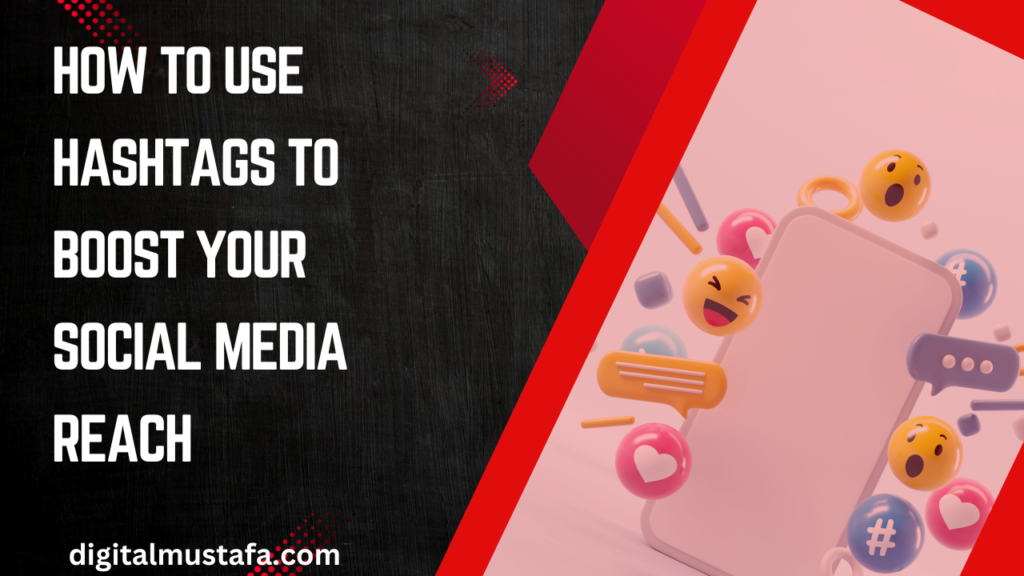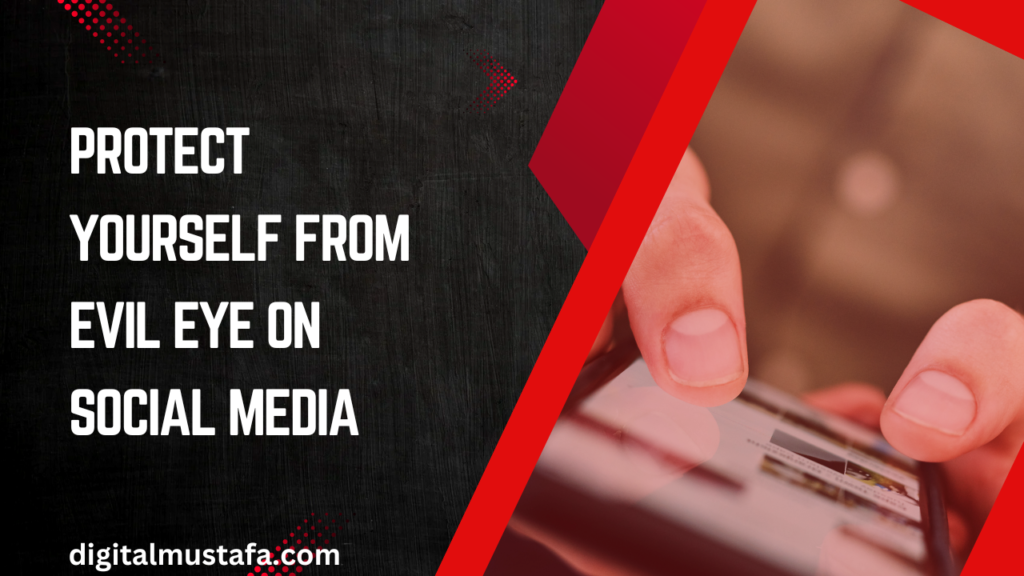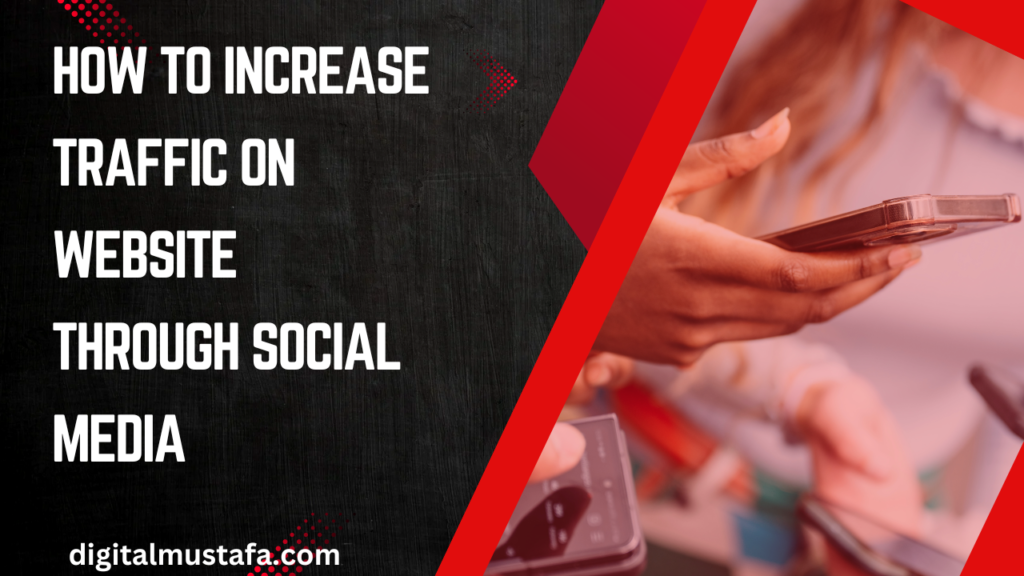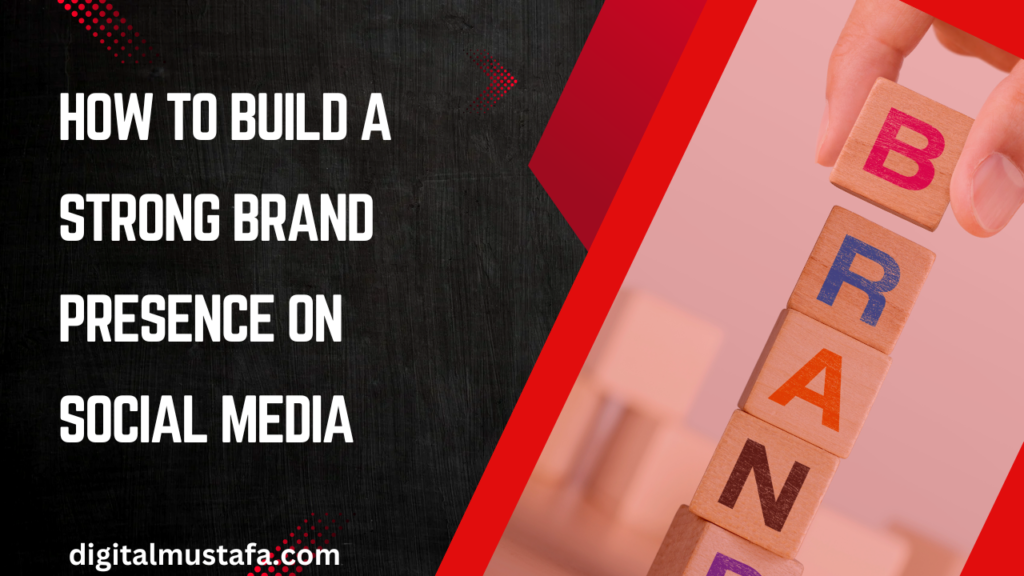Hashtags are a fundamental part of social media, playing a crucial role in increasing visibility, engagement, and reach. When used effectively, hashtags can connect your content with a broader audience, leading to more followers, higher engagement rates, and improved brand awareness. In this comprehensive guide, we’ll explore how to use hashtags to boost your social media reach, covering everything from the basics to advanced strategies.
What Are Hashtags?
Hashtags are words or phrases preceded by the # symbol, used on social media platforms to categorize content and make it discoverable to users interested in that topic. By adding hashtags to your posts, you can join conversations and trends, making your content visible to people beyond your followers.
Why Hashtags Matter
Hashtags serve several essential functions on social media:
- Categorization: Hashtags categorize content, making it easier for users to find posts related to specific topics.
- Discovery: Users often search for or follow hashtags to discover content relevant to their interests.
- Engagement: Posts with hashtags typically see higher engagement rates because they reach a broader audience.
- Branding: Hashtags can be used for branding purposes, helping businesses create a recognizable and consistent presence.
Consider the following table showing the impact of using hashtags on engagement:
| Platform | Posts with Hashtags (Engagement) | Posts without Hashtags (Engagement) |
|---|---|---|
| 12.6% | 7.2% | |
| 2x more retweets | Lower engagement | |
| 2x more reach | Reduced visibility | |
| 1.3x more interactions | Less discoverability |
Types of Hashtags
To effectively use hashtags, it’s essential to understand the different types available and their purposes. Here are the main types of hashtags:
1. Branded Hashtags
Branded hashtags are unique to your business or campaign. They can include your company name, product name, or a specific campaign tagline. These hashtags are perfect for building brand identity and encouraging user-generated content.
Example: Nike’s #JustDoIt is a classic branded hashtag that has become synonymous with the brand and its motivational messaging.
2. Industry Hashtags
Industry hashtags are related to your field or niche. They help you connect with others in your industry and attract a relevant audience. Using industry hashtags can position you as a thought leader and increase your content’s visibility among peers and potential customers.
Example: A digital marketing agency might use #DigitalMarketing, #SEO, or #ContentMarketing to reach professionals interested in those topics.
3. Community Hashtags
Community hashtags are used by groups of people with shared interests or affiliations. These hashtags help you tap into niche communities and engage with like-minded individuals. They are particularly effective for building relationships and fostering engagement.
Example: #Foodie is a popular community hashtag used by food enthusiasts to share recipes, reviews, and food photography.
4. Campaign Hashtags
Campaign hashtags are specific to a marketing campaign, product launch, or event. These hashtags are typically used for a limited time and are highly focused. They help in tracking campaign performance and engaging participants.
Example: Coca-Cola’s #ShareACoke campaign encouraged customers to share personalized Coke bottles on social media, generating millions of UGC posts.
5. Event Hashtags
Event hashtags are used for conferences, webinars, trade shows, or other events. They allow attendees and organizers to share updates, experiences, and insights related to the event. Using the official event hashtag helps you join the conversation and connect with other participants.
Example: #CES2024 is the hashtag for the Consumer Electronics Show 2024, where attendees and exhibitors share highlights from the event.
How to Choose the Right Hashtags
Selecting the right hashtags is crucial to maximizing your social media reach. Here’s how to choose the most effective hashtags for your content:
1. Relevance
The hashtags you use should be relevant to your content and audience. Irrelevant hashtags may attract the wrong audience, leading to lower engagement and possibly even negative feedback.
2. Popularity vs. Niche
Popular hashtags have a broad reach but can be highly competitive. Niche hashtags, on the other hand, have a smaller but more targeted audience. It’s best to use a mix of both to balance visibility and engagement.
Example:
- Popular Hashtag: #Travel (Over 500 million posts)
- Niche Hashtag: #SustainableTravel (Over 200,000 posts)
3. Research and Analysis
Before using a hashtag, research its performance and relevance. Tools like Hashtagify, RiteTag, and Instagram Insights can help you analyze hashtag popularity, usage trends, and related hashtags.
4. Monitor Competitors
Analyze the hashtags your competitors are using. This can provide insights into industry trends and help you identify effective hashtags for your content.
Best Practices for Using Hashtags
Once you’ve selected the right hashtags, it’s essential to use them effectively. Here are some best practices to follow:
1. Limit the Number of Hashtags
While hashtags can boost visibility, using too many can make your posts look cluttered and spammy. On Instagram, using up to 10-15 hashtags is generally effective, while on Twitter, it’s best to stick to 1-2.
2. Place Hashtags Strategically
On Instagram, hashtags can be placed in the caption or the first comment. On Twitter and LinkedIn, they’re usually integrated into the post text. Experiment with placement to see what works best for your audience.
3. Capitalize Multi-Word Hashtags
To improve readability, capitalize the first letter of each word in multi-word hashtags (e.g., #ThrowbackThursday instead of #throwbackthursday).
4. Create and Promote Branded Hashtags
If you create a branded hashtag, promote it consistently across all your social media channels. Encourage your followers to use the hashtag in their posts to increase its visibility.
5. Track Hashtag Performance
Regularly monitor the performance of your hashtags using analytics tools. Pay attention to which hashtags drive the most engagement and adjust your strategy accordingly.
Here’s a table showing the optimal number of hashtags for different platforms:
| Platform | Recommended Hashtags | Engagement Impact |
|---|---|---|
| 10-15 | Higher engagement | |
| 1-2 | 2x more retweets | |
| 3-5 | Increased reach | |
| 1-2 | Slight engagement boost |
Advanced Hashtag Strategies
For businesses looking to take their hashtag game to the next level, here are some advanced strategies:
1. Use Trending Hashtags
Participating in trending hashtags can give your content a visibility boost. However, only use trending hashtags if they are relevant to your content. Jumping on trends unrelated to your brand can come across as inauthentic.
Example: During the holiday season, using hashtags like #BlackFriday or #CyberMonday can help you reach shoppers looking for deals.
2. Create a Hashtag Challenge
Hashtag challenges encourage users to create content using your hashtag, increasing brand engagement and visibility. This strategy is particularly effective on platforms like TikTok and Instagram.
Example: TikTok’s #InMyDenim challenge, launched by Guess, encouraged users to show off their denim outfits. The challenge went viral, generating millions of user-generated posts.
3. Leverage Hashtags for User-Generated Content
Encourage your followers to use a specific hashtag when posting about your brand. This not only generates content for your social media channels but also builds a community around your brand.
Example: Starbucks’ #RedCupContest invited customers to share photos of their holiday-themed cups, resulting in thousands of user-generated posts.
4. Hashtag Research Tools
Investing in hashtag research tools can help you discover new and trending hashtags, analyze their performance, and track your competitors. Tools like Hashtagify, RiteTag, and Keyhole offer in-depth insights and data.
Here’s a table comparing popular hashtag research tools:
| Tool | Features | Price Range |
|---|---|---|
| Hashtagify | Hashtag suggestions, trends | $29-$89/month |
| RiteTag | Instant hashtag suggestions | $49/year |
| Keyhole | Hashtag tracking, analytics | $49-$199/month |
Case Studies: Successful Hashtag Campaigns
Learning from successful hashtag campaigns can provide valuable insights into how to create and execute your own. Here are a few notable examples:
1. Coca-Cola: #ShareACoke
The #ShareACoke campaign is one of the most iconic examples of branded hashtag marketing. Coca-Cola printed popular names on their bottles and encouraged customers to share photos using the hashtag. The campaign resulted in millions of UGC posts, boosting Coca-Cola’s social media presence and sales.
2. Apple: #ShotOniPhone
Apple’s #ShotOniPhone campaign encouraged iPhone users to share their best photos taken with their devices. The campaign highlighted the iPhone’s camera quality and generated a massive amount of user-generated content. Apple regularly features selected photos on its social media channels and billboards.
3. Nike: #JustDoIt
Nike’s #JustDoIt hashtag has become synonymous with the brand’s motivational messaging. By consistently using the hashtag across all campaigns, Nike has built a strong brand identity and fostered a global community of athletes and fitness enthusiasts.
Measuring the Success of Your Hashtag Strategy
To ensure that your hashtag strategy is effective, it’s essential to measure its success and make data-driven adjustments. Here’s how you can track and analyze the performance of your hashtags:
1. Engagement Metrics
Monitor key engagement metrics such as likes, comments, shares, and retweets on posts that use hashtags. Comparing these metrics with posts that don’t use hashtags can help you determine their impact on your content’s visibility.
2. Reach and Impressions
Reach refers to the total number of unique users who see your content, while impressions refer to the total number of times your content is displayed. Analyzing these metrics can help you understand how well your hashtags are expanding your content’s visibility.
3. Hashtag Performance
Most social media platforms provide insights into hashtag performance. For example, Instagram shows the number of impressions from hashtags in its Insights section. Use these insights to identify the most effective hashtags and refine your strategy.
4. Follower Growth
Track how your follower count changes after launching a hashtag campaign. A significant increase in followers indicates that your hashtags are attracting new audiences.
5. Conversions
If your goal is to drive conversions (e.g., sales, sign-ups), monitor how your hashtag campaigns contribute to these outcomes. Use tools like UTM parameters in Google Analytics to track conversions from specific hashtag campaigns.
Here’s a table summarizing key metrics to track for hashtag success:
| Metric | What It Measures | Why It Matters |
|---|---|---|
| Engagement | Likes, comments, shares, retweets | Indicates audience interaction |
| Reach and Impressions | Total visibility of your content | Shows how far your content spreads |
| Hashtag Performance | Impressions and engagement from hashtags | Identifies effective hashtags |
| Follower Growth | Increase in followers | Attracts new audiences |
| Conversions | Sales, sign-ups, or other desired actions | Measures ROI of hashtag campaigns |
Common Mistakes to Avoid
While hashtags are a powerful tool, using them incorrectly can hinder your social media strategy. Here are some common mistakes to avoid:
1. Overusing Hashtags
Using too many hashtags can make your posts look cluttered and spammy. Stick to a reasonable number of relevant hashtags to maintain a professional and clean appearance.
2. Using Irrelevant Hashtags
Avoid using popular but unrelated hashtags just to gain visibility. This can attract the wrong audience and lower engagement rates. Always ensure your hashtags are relevant to your content and audience.
3. Ignoring Hashtag Analytics
Failing to monitor hashtag performance means missing out on valuable insights. Regularly check your analytics to see which hashtags are working and which ones need to be replaced.
4. Using Banned or Shadowbanned Hashtags
Some hashtags may be banned or shadowbanned on platforms like Instagram due to inappropriate content or misuse. Using these hashtags can reduce your post’s visibility. Always check the status of your hashtags before using them.
Future Trends in Hashtag Marketing
As social media platforms evolve, so do hashtag trends. Staying ahead of these trends can help you maintain a competitive edge. Here are some emerging trends to watch:
1. Voice Search and Hashtags
With the rise of voice search, users may start searching for content using voice commands. Optimizing hashtags for voice search could become a new strategy in the near future.
2. AI-Powered Hashtag Suggestions
Artificial intelligence is increasingly being used to suggest hashtags based on content, audience, and trends. AI-powered tools can help you choose the most effective hashtags for your posts.
3. Personalized Hashtag Feeds
Social media platforms may start offering personalized hashtag feeds, showing users content based on their interests and behavior. This could change how brands use hashtags to reach their target audience.
4. Integration with Augmented Reality (AR)
As AR becomes more prevalent on social media, hashtags could be integrated into AR experiences, allowing users to interact with brands in new and immersive ways.
Here’s a table outlining these future trends and their potential impact on hashtag marketing:
| Trend | Description | Potential Impact |
|---|---|---|
| Voice Search and Hashtags | Hashtags optimized for voice search queries | Broader discoverability |
| AI-Powered Suggestions | AI tools suggesting effective hashtags | Improved hashtag performance |
| Personalized Hashtag Feeds | Customized feeds based on user interests | More targeted content visibility |
| AR Integration | Hashtags in augmented reality experiences | Enhanced brand engagement |
Conclusion
Hashtags are a versatile and powerful tool for boosting your social media reach, driving engagement, and building brand awareness. By understanding the different types of hashtags, selecting the right ones, and following best practices, you can effectively leverage hashtags to connect with your target audience and achieve your social media goals.
As you implement your hashtag strategy, remember to continuously monitor performance, stay updated on emerging trends, and avoid common pitfalls. By doing so, you’ll not only increase your content’s visibility but also foster a stronger connection with your audience, leading to long-term growth and success on social media.
Whether you’re a small business owner, a digital marketer, or a social media manager, mastering the art of hashtag marketing is essential for staying competitive in today’s digital landscape. Start experimenting with hashtags today and watch your social media reach soar.
4o



